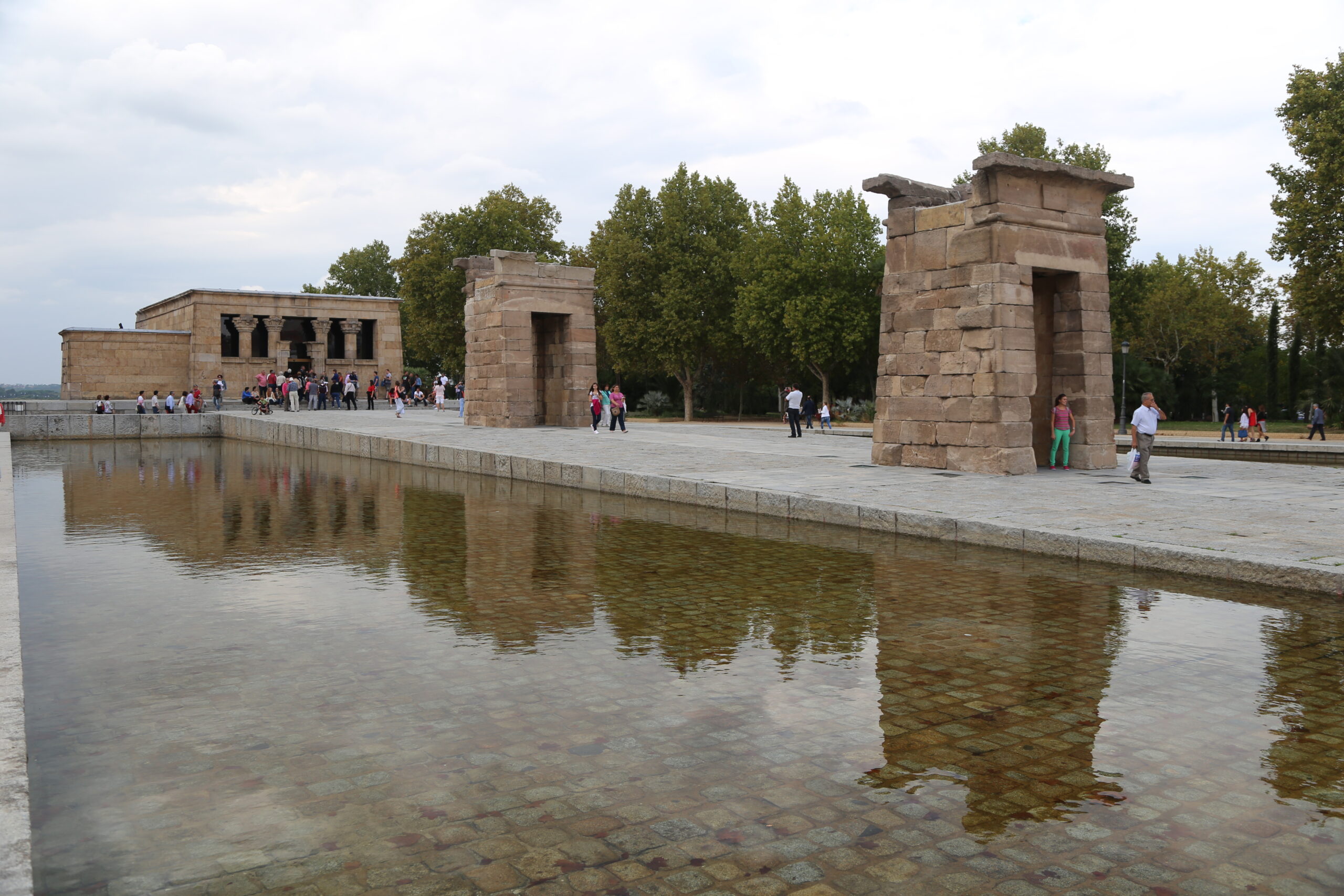There are certain places in the world that make you stop, not just to look, but to feel. The Temple of Debod in Madrid is one of those places. When I first walked up the stone path and saw the temple rising quietly against the reflection of the water, it felt as though time had folded in on itself. Here I was, in the bustling capital of Spain, yet standing in front of an authentic ancient Egyptian temple, its weathered stones whispering stories of a land and culture thousands of years old. It was surreal, and in a way, slightly disorienting, because your mind expects to see something so ancient under the desert sun of the Nile, not surrounded by green trees and European skies.

The scene itself is calm and contemplative. Wide pools of water surround the temple, reflecting its squared archways and the silhouettes of people passing through. The water is shallow, clear enough to see the textured stones beneath, yet smooth enough to mirror the structure almost perfectly. I couldn’t help but pause at the edge, watching the reflection ripple as the wind moved across the surface. Around me, children laughed, couples strolled, and tourists angled for the perfect photograph. But in the midst of that movement, the temple itself remained stoic, a reminder that it had already stood for centuries before us and would likely stand for centuries more.
What makes this temple even more captivating is the story of how it got here. Originally constructed in Egypt around the 2nd century BC, it was dismantled in the 20th century when the construction of the Aswan High Dam threatened to submerge countless monuments. In gratitude for Spain’s assistance in saving Nubian temples, the Egyptian government gifted Debod to Madrid. That’s how this slice of ancient Egypt ended up here, far away from its birthplace. And yet, somehow, it feels like it belongs. Walking through its gateways, I felt a curious harmony between the temple and its new surroundings—the leafy park, the open plaza, the backdrop of Madrid’s skyline.
For me, visiting the Temple of Debod was not just about history, but about perspective. It’s one thing to learn about cultural exchange or the preservation of heritage in books, but it’s another to stand before something that has physically journeyed across continents. I thought about the hands that carved those stones millennia ago, the priests who once passed through those doors, the workers who carefully disassembled and reassembled the temple stone by stone, and now, the visitors like me who simply walk around, snap a photo, and carry away an impression of awe. It is a continuous chain of human interaction across time, each person adding their own moment to the temple’s evolving story.
I lingered there longer than I expected, waiting for the light to shift. As the sky darkened slightly with clouds, the temple’s reflection grew softer, the water deepening into a muted bronze. I imagined how stunning it must look at sunset, when the golden hour paints its walls in warm tones and the city lights begin to sparkle behind it. People say that’s the most magical moment to see Debod, and I can believe it. There is something profoundly moving about a place that can transport you both geographically and historically, reminding you that the world is full of unexpected connections—between Egypt and Spain, between past and present, and between people who may never meet but share the same view across time.
Walking away from the temple, I felt grateful. Grateful that something so fragile and ancient had survived. Grateful that I had stumbled into this moment, in a park in Madrid, where I could touch a piece of Egypt without traveling to Cairo or Aswan. And grateful for the reminder that travel isn’t always about distance, but about the way certain places expand the way you see the world. The Temple of Debod is more than a monument—it’s a quiet lesson in history, resilience, and the strange, beautiful journeys that culture can take.
Leave a Reply